Synopsis of The Twilight Zone season 2
Classic episodes — among them “Eye of the Beholder,” in which a disfigured woman undergoes surgery, and “Long Distance Call,” in which a boy calls a deceased relative — stand out in The Twilight Zone Season 2 of creator Rod Serling’s eerie, Emmy-winning series.

| No. in season | Title | Original air date |
|---|---|---|
| 1 | “King Nine Will Not Return“ | September 3, 1960 |
| A WWII captain finds himself in the desert, next to his crashed plane. Where is his crew? And why are futuristic jet planes flying overhead? | 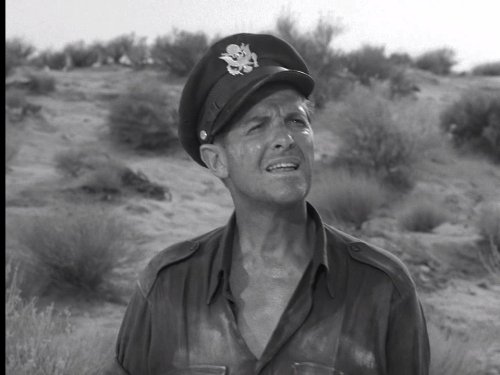 | |
| 2 | “Man in the Bottle“ | October 7, 1960 |
| A discontented curio shop owner thinks he’s finally found happiness when a genie he discovers in an old bottle grants him four wishes. | 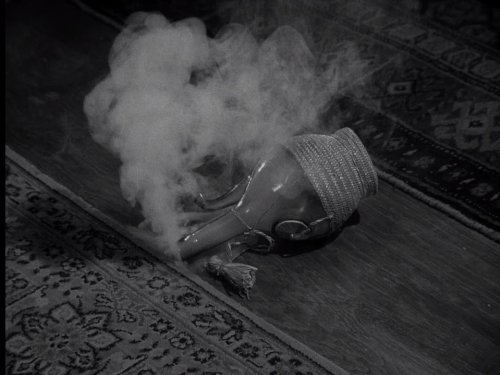 | |
| 3 | “Nervous Man in a Four Dollar Room“ | October 14, 1960 |
| Ordered to commit a murder he doesn’t want to perform, a small-time hood nervously looks in the mirror and sees the man he could have been–confident, strong…and determined to get out. | 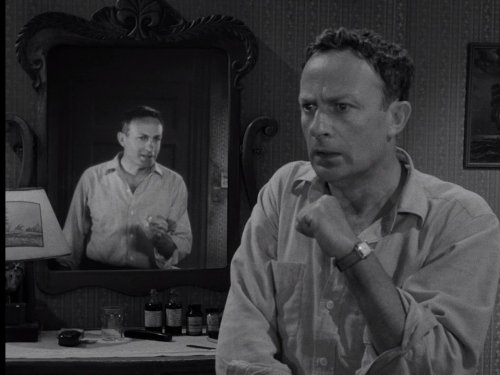 | |
| 4 | “A Thing About Machines“ | October 28, 1960 |
| A writer feels that the machines in his house are conspiring against him. | 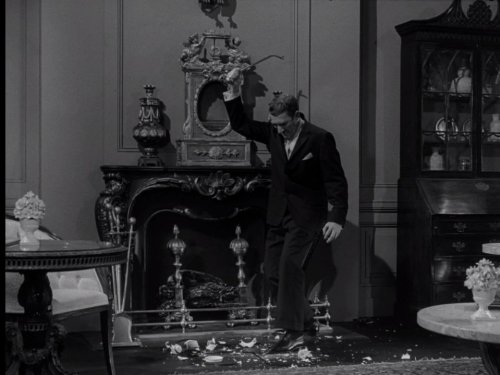 | |
| 5 | “The Howling Man“ | November 4, 1960 |
| A man on a walking trip of post-World War I Europe gets caught in a storm. He comes across a remote monastery with a mysterious prisoner. The Devil you say! Seriously, one of the best episodes of the series. With John Carradine. | 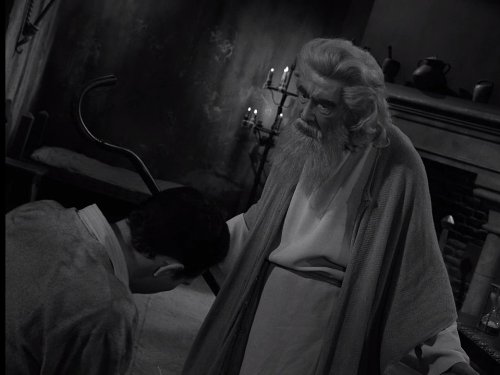 | |
| 6 | “Eye of the Beholder“ | November 11, 1960 |
| A young woman is forced to undergo experimental treatments in an attempt to make her appear “normal.” But who defines “normal”? One of the best episodes of the series. | 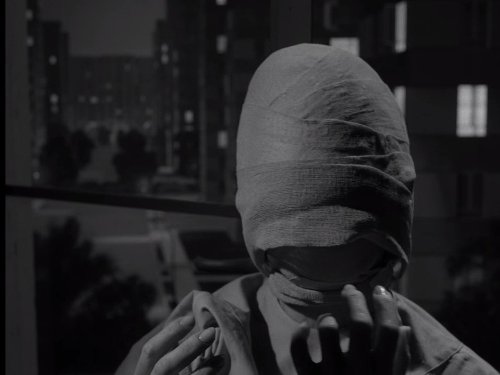 | |
| 7 | “Nick of Time“ | November 18, 1960 |
| A superstitious newlywed (William Shatner) becomes obsessed by a penny fortune-telling machine when he and his new wife are stranded with car trouble. | 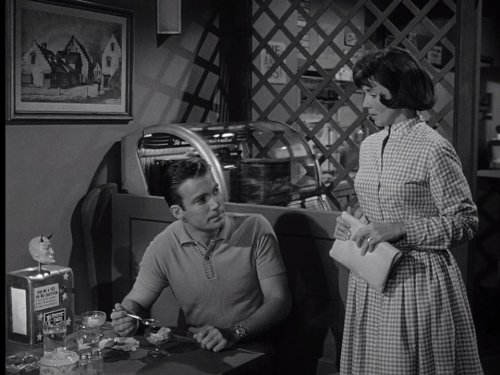 | |
| 8 | “The Lateness of the Hour“ | December 2, 1960 |
| Dr. Loren enjoys the faultless robot servants he has invented. His daughter, however, feels imprisoned by them–and soon learns how right she is. | 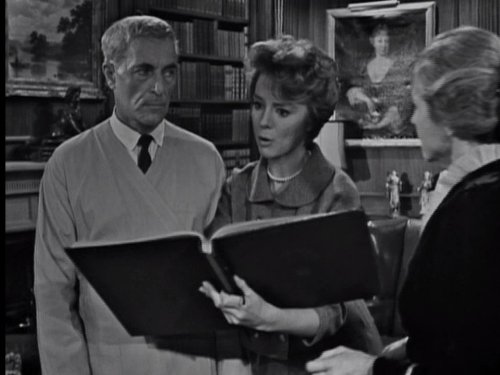 | |
| 9 | “The Trouble with Templeton“ | December 9, 1960 |
| Booth Templeton is an aging actor who longs for the old days when his wife was alive. Miraculously, he is given a sobering glimpse of the past he holds so dear. | 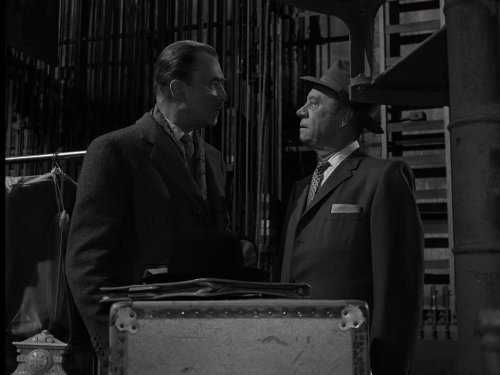 | |
| 10 | “A Most Unusual Camera“ | December 16, 1960 |
| Chester Diedrich (Fred Clark) and his wife Paula, after burglarizing a curio shop, end up with a camera that takes pictures of events five minutes into the future. | 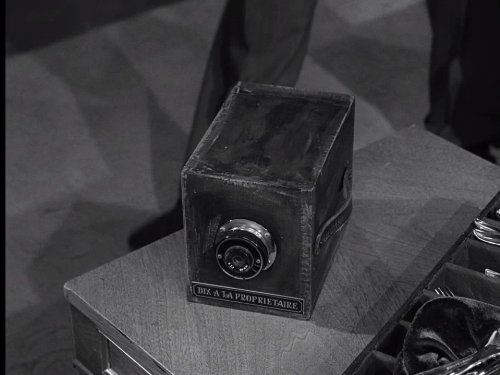 | |
| 11 | “The Night of the Meek“ | December 23, 1960 |
| A down-on-his-luck department store Santa Claus (Art Carney) discovers the Christmas spirit. With the help of a magical bag of toys … | 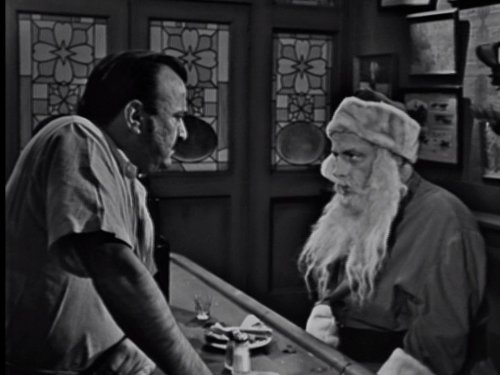 | |
| 12 | “Dust“ | January 6, 1961 |
| After selling the rope for a hanging, a greedy peddler tries to sell the condemned man’s father a bag of “magic dust.” | 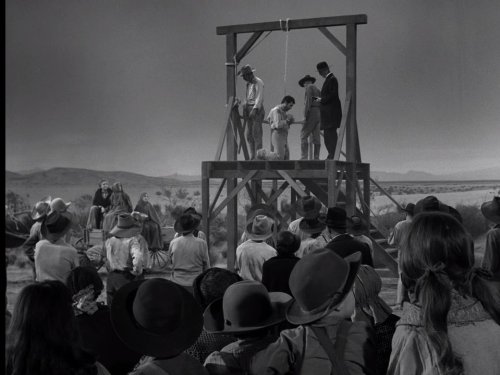 | |
| 13 | “Back There“ | January 13, 1961 |
| It’s April 14, 1961. Peter Corrigan (Russell Johnson of Gilligan’s Island) and friends are discussing time travel at their men’s club. Corrigan suddenly becomes dizzy. When his head clears, he has moved back to April 14, 1865 – the date of Lincoln’s assassination. | 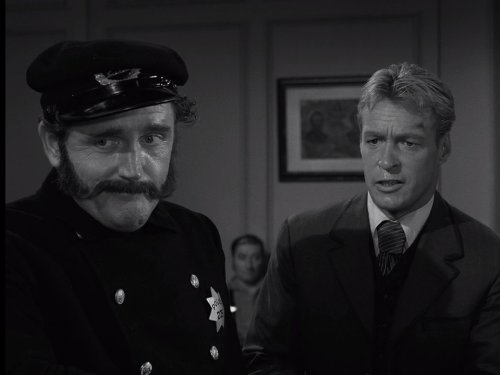 | |
| 14 | “The Whole Truth“ | January 20, 1961 |
| A peculiar Model A automobile compels a used car dealer to tell only the truth. | 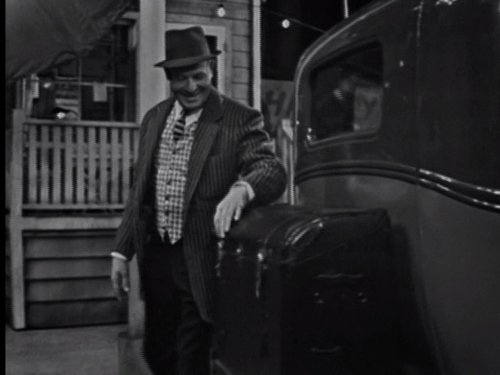 | |
| 15 | “The Invaders“ | January 27, 1961 |
| An old woman (Agnes Moorehead) in an isolated farmhouse encounters tiny, hostile aliens. | 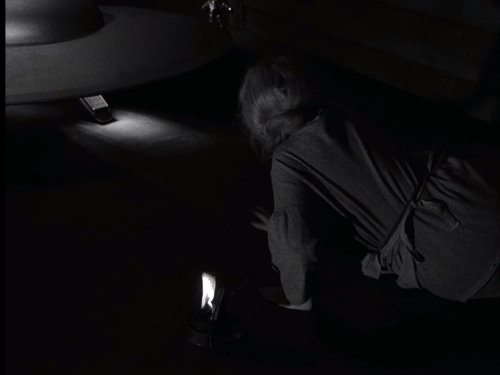 | |
| 16 | “A Penny for Your Thoughts“ | February 3, 1961 |
| The lucky flip of a coin seems to give a mild-mannered bank clerk the power to read minds. But he soon learns that you can’t believe everything you read. | 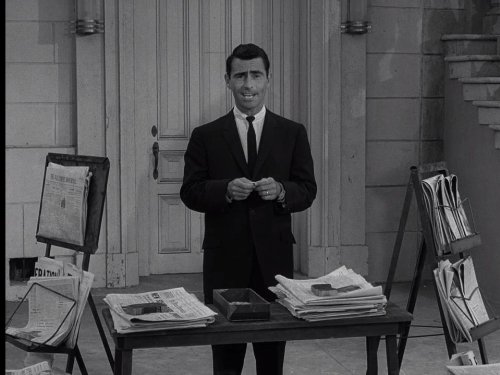 | |
| 17 | “Twenty-two“ | February 10, 1961 |
| Miss Powell has a recurring nightmare about room 22 – a morgue. | 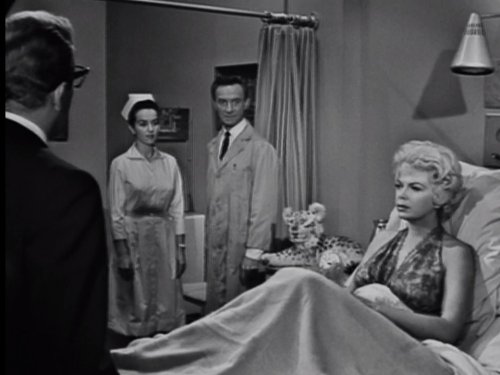 | |
| 18 | “The Odyssey of Flight #33“ | February 24, 1961 |
| A commercial aircraft mysteriously travels back through time. | 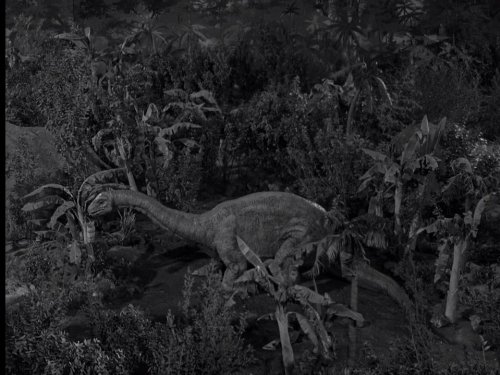 | |
| 19 | “Mr. Dingle, the Strong“ | March 3, 1961 |
| Martians give Luther Dingle (Burgess Meredith) the strength of 300 men. With Don Rickles as the barroom bully. | 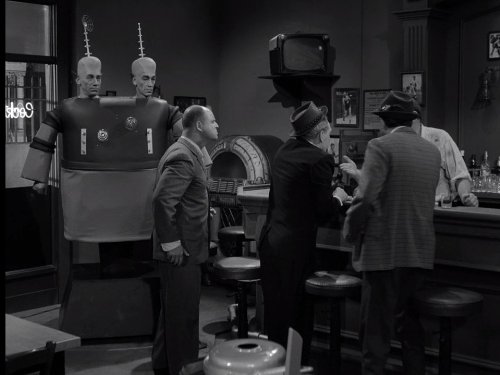 | |
| 20 | “Static“ | March 10, 1961 |
| Ed Lindsay hates television, so he gets his old radio out of the basement of the boardinghouse where he lives. He soon finds he can receive programs from the past when he’s alone. | 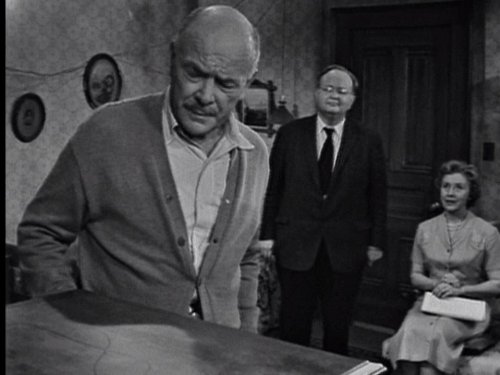 | |
| 21 | “The Prime Mover“ | March 24, 1961 |
| Ace Larsen discovers his business partner has the ability to control objects with his mind. The pair head to Vegas to win big. With Buddy Ebsen. | 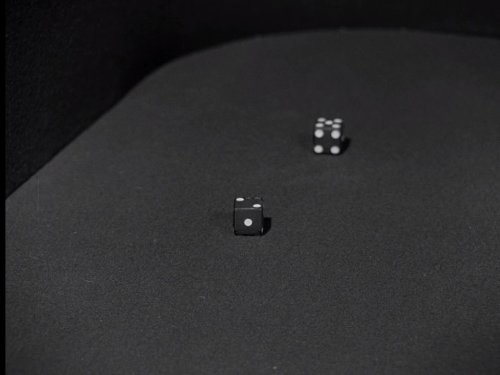 | |
| 22 | “Long Distance Call“ | March 31, 1961 |
| A young boy find he can communicate with his dead grandmother through a toy phone. | 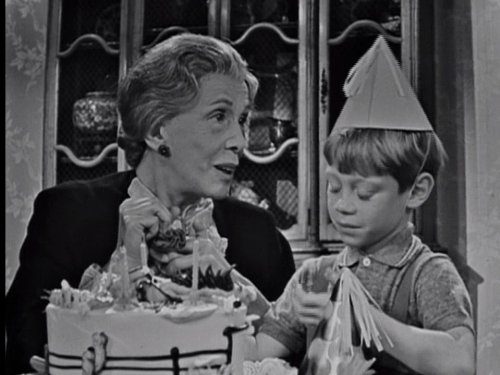 | |
| 23 | “100 Yards Over the Rim“ | April 7, 1961 |
| In 1847 a western settler sets out to find medicine for his dying son – and stumbles into modern-day New Mexico. | 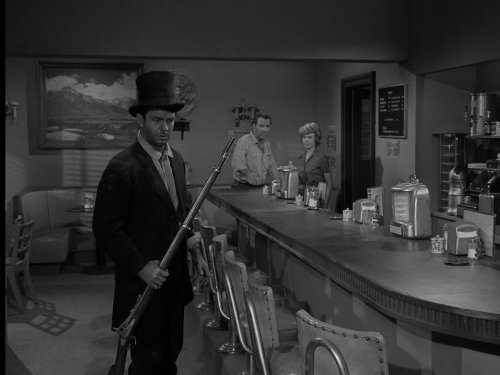 | |
| 24 | “Rip Van Winkle Caper“ | April 21, 1961 |
| Thieves put themselves into suspended animation for 100 years after hiding a million dollars worth of gold bars. An excellent episode, talking about human nature … and how things can change. | 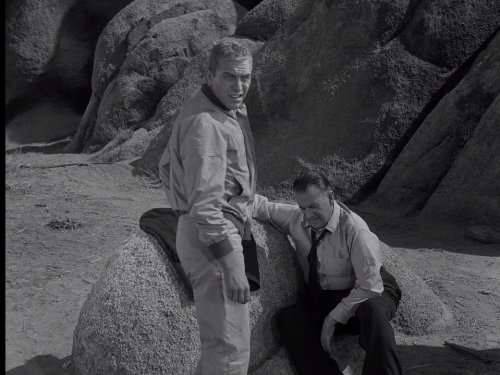 | |
| 25 | “The Silence“ | March 25, 1960 |
| A talkative man takes an offer to keep silent for a year for $500,000. | 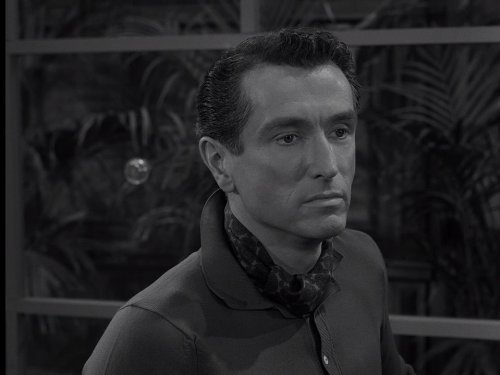 | |
| 26 | “Shadow Play“ | May 5, 1961 |
| Trapped in a recurring nightmare, a man tries to persuade those who are sentencing him to death that the whole scenario is not real. | 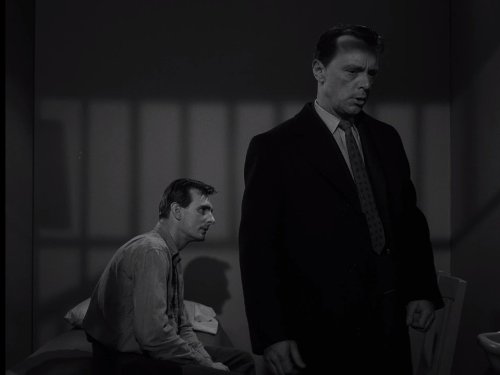 | |
| 27 | “The Mind and the Matter“ | May 12, 1961 |
| A book on the power of thought enables an irritable man to re-create the world exactly as he wants it. | 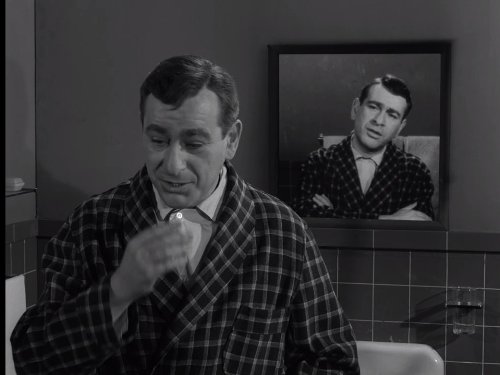 | |
| 28 | “Will the Real Martian Please Stand Up“ | May 26, 1961 |
| Troopers follow the tracks from a frozen pond, into a diner. Inside they find a soda jerk, a bus driver and his seven passengers. The bus driver is certain only six people boarded his bus. An excellent episode, with an unexpected twist ending. | 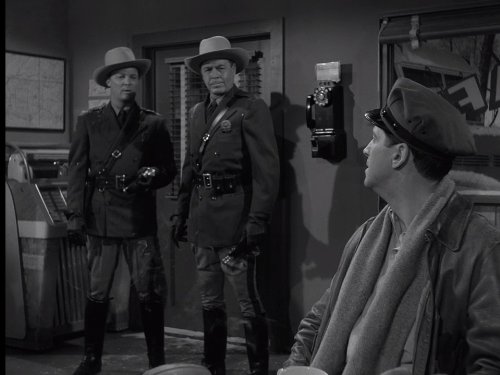 | |
| 29 | “The Obsolete Man” | June 2, 1961 |
| In a future state where religion and books have been banned, a librarian is judged obsolete and sentenced to death. An excellent performance by Burgess Meredith, with an excellent story about the power of the state … | 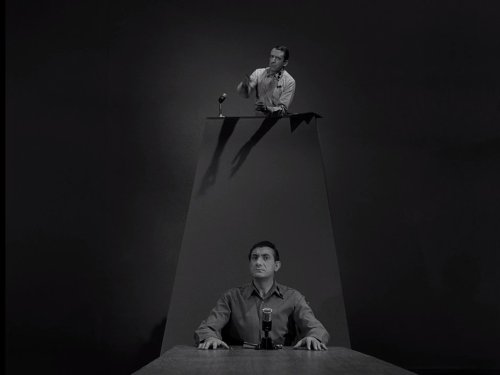 |
Editorial review of The Twilight Zone Season 2
The middle ground between light and shadow just became a whole lot sharper and detailed with this stellar five-disc set, which compiles the entire second season of Rod Serling’s classic television series, The Twilight Zone, and gilds the whole package by including a treasure trove of supplemental material. TZ‘s second season (1960-61) is a stand-out in the series’ history thanks to its sheer number of memorable stories; among the episodes that have achieved pop culture landmark status are
- the chilling “Eye of the Beholder” (a disfigured woman undergoes surgery to appear more “normal”) and
- “The Silence” (Franchot Tone wagers that Liam Sullivan cannot silent for a year);
- “The Invaders” (Agnes Moorhead is pitted against tiny space travelers),
- “Long Distance Call” (Lost in Space‘s Billy Mumy converses with a deceased relative on his toy phone),
- and the more light-hearted “Night of the Meek,” in which department store Santa Claus Art Carney gets a chance to fulfill the real St. Nick’s duties.
As always, the combination of sharp, intelligent scripting (mostly by Serling, but with notable contributions by Charles Beaumont, Richard Matheson, and George Clayton Johnson) and superb casting (guest stars include Cliff Robertson, Dennis Weaver, Burgess Meredith, William Shatner, John Carradine, and Don Rickles) produces television that remains as thought-provoking and entertaining today as it was over 40 years ago.
Though The Twilight Zone has received numerous home video releases over the years, the aptly titled Definitive Edition is arguably the finest presentation of this series to date. Each of the episodes have been digitally remastered from original camera negatives (even the episodes filmed on videotape look good) and magnetic soundtracks; Serling’s previews for upcoming episodes and advertising “billboards” (sponsor spots) have also been included, as have commentaries by Rickles, Weaver, Robertson, Shelly Berman, and other performers.
Clips of Serling on The Jack Benny Show and in conversation with Mike Wallace, audio interviews with cast and crew members by Twilight Zone Companion author Marc Scott Zicree, radio adaptations of classic episodes, and even the script for “Twenty-Two,” complete with Serling’s notes, round out the set, which belongs in the collection of anyone who’s ever been enthralled by this landmark series. Now, if only the same treatment could be afforded to Serling’s other anthology program, Night Gallery –Paul Gaita


